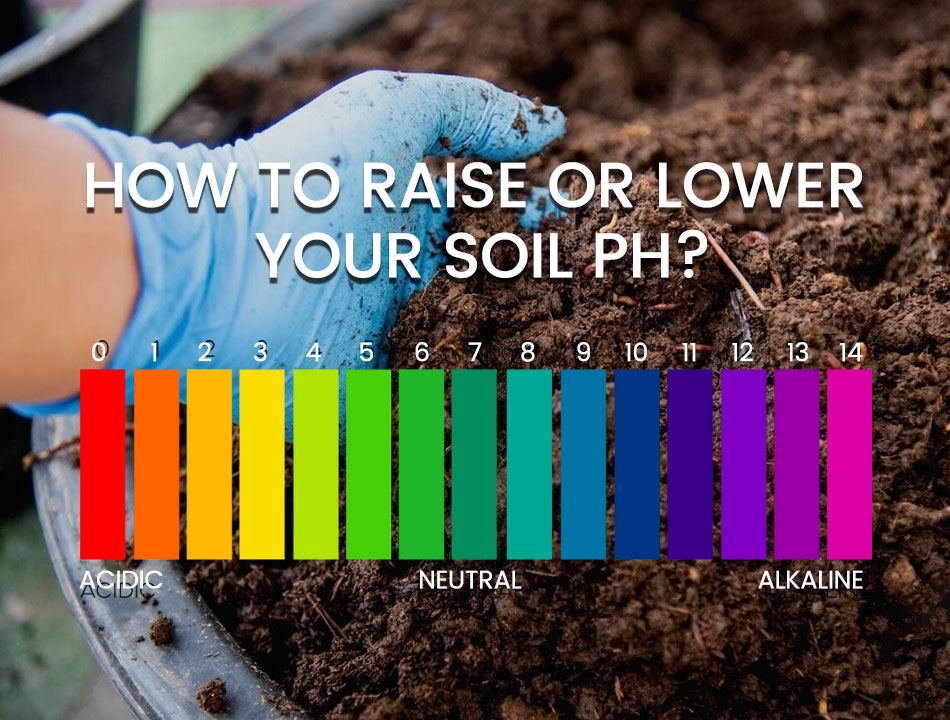
Soil pH is crucial to growing and maintaining healthy indoor and outdoor plants. Interestingly, only a few growers know what soil pH is and how it works. For most growers familiar with soil pH, one of the challenges they face is deciding whether to reduce or increase the pH of their growing soil. This is due to a couple of reasons, including needing to understand the importance of soil pH and balancing and having little or no knowledge of how to raise or lower soil pH effectively.
This article addresses all these concerns while serving as a detailed guide to understanding soil pH and how you can safely balance yours to get the best out of your soil and cultivated plants.
What Is Soil pH, and Why Is It Important?
Let’s start by understanding soil pH from a grower’s point of view. The pH of any soil measures the degree of acidity or alkalinity of that soil, i.e., the amount of hydrogen-ion concentration or potential hydrogen in the soil. The standard pH range has a scale of 1-14, where a pH of 6.5-7.5 indicates neutrality, less than 6.5 indicates acidic, and over 7.5 indicates alkalinity.
Knowing your soil’s pH—alkalinity or acidity levels—is vital because plants require a specific soil pH range to access some nutrients in the soil. Except your soil has this optimal pH, your plants may struggle to grow properly, irrespective of how much fertilizer you apply. That is why experts recommend determining soil pH to see if it is within the requirements of the plants you intend to cultivate.
How Do You Measure Your Soil pH Using Soil pH Meters?
The first step in balancing your soil pH is to know what your soil pH is currently. While there are a few methods to measure your soil pH, experts recommend the use of soil pH meters if you are interested in a relatively accurate DIY method.
You can get a ballpark number with a good-quality home pH meter. These meters have a clear reading dashboard that designates the pH scale. You can determine your soil’s pH based on where the arrow points on the dashboard. In addition, their single probe detection facilitates easy assessment because the pH is tested right in the ground instead of taking a sample.
How Do You Test pH Without Using A Soil pH Meter?
There are a few methods to choose from when navigating how to test the pH of the soil in the absence of a pH meter.
DIY Testing Kits
You can get soil strips and similar DIY testing kits in local shops around you. These kits will tell you what side of the pH scale your soil is instead of exact numbers. But these are often enough to give you a direction of what adjustments to make.
Kitchen Supplies
You can leverage the principles of chemical reactions to determine if your soil is acidic or basic. For this, you will need your soil sample, a liquid measuring cup, distilled water, a coffee filter, a pH testing kit, vinegar, and baking soda.
- Separate dirt and debris from your soil sample.
- Add some filtered water to turn the soil into mud.
- Add ½ cup of vinegar to one part and stir until constancy.
If you notice fizzling or foaming, your soil is alkaline. If nothing happens, repeat steps 1-2, and add ½ cup of baking soda instead of vinegar. The formation of foams or fizzles, in this case, indicates that your soil is acidic.
Lab Tests
Experts recommend comprehensive lab tests for more detailed results. You can send your soil sample to such labs in your city and get a full report on your soil pH levels.

How Do You Raise Your Soil pH?
Now that you know your soil’s pH, you can adjust it to suit your plant’s requirements. For example, you can increase the pH in the soil by applying lime and liming materials. This may be in the form of any lime-based compound, including dolomite lime and agricultural lime. However, avoid adding excessive lime to your soil to prevent adverse effects, such as burning plants. Always check the dosing instructions included by the manufacturer to prevent overdosing.
Growers have also reported achieving an increase in soil pH by using less conventional methods like applying crushed eggshells, baking soda, or wood ashes. The high calcium content in pulverized eggshells can help to make the soil more alkaline.
Dry wood ashes tend to raise pH quickly but temporarily, and it is best to avoid ashes from chemically-treated wood. Baking soda is another cost-effective method, but it is also temporary. Too much baking soda can create an imbalance, so applying it every few months is best.
How to Lower pH in Soil?
Many growers need help with how to lower soil pH. You can also go from a high or neutral pH to a low soil pH. There are three primary methods of decreasing soil pH: the use of sulfur, sulfuric acid, and aluminum sulfate. The choice of material among the three options depends on how soon you want an adjustment and the size/plant you planted or intend to grow in the affected soil.
Sulfuric acid is the most potent, but its use is often discouraged because of how dangerous it can be. Aluminum sulfate and elemental sulfur are safer and can be used indoors. In addition, you can get relatively faster results from aluminum sulfate due to its solubility. However, the economic nature of elemental sulfur gives it the upper hand when dealing with a large area.
To Round Up…
The ideal soil pH requirements of every plant vary. For example, most plants do well with a somewhat neutral pH of between 6.2 to 7.0. On the other hand, plants like azaleas and blueberries require highly acidic soil pH, while clematis and lilacs grow best on alkaline soil. It is also essential to mention plants like hydrangeas with changing pH requirements.
Based on these, an indoor grower must understand how pH works and why it is important. This article has provided detailed insights into these, as well as practical steps on how to test the pH of the soil, how to lower soil pH, and more, depending on the plants you want to grow. Moreover, in order to facilitate growers to better measure the soil pH, Mars Hydro will launch a functional four-in-one pH test pen in February this year, so everybody please stay tuned!






